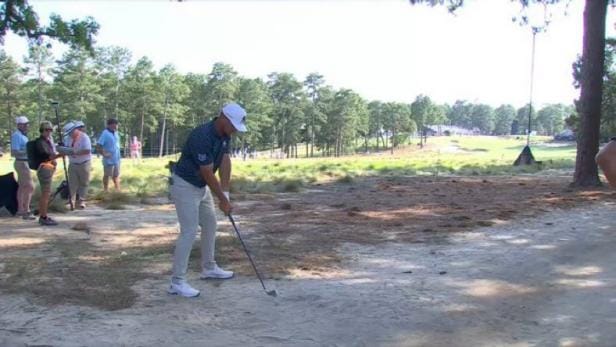Bryson DeChambeau’s round at Pinehurst had one bad drive that landed him behind a ShotLink tower, a temporary immovable obstruction ruled by the USGA, resulting in a unique situation. The par-5 fifth hole posed a challenge for DeChambeau, who had to navigate around the structure to continue his round. Despite the option to hit around the tower, DeChambeau chose to take relief in accordance with Rule F-23.
The layout of the fifth green presented challenges for players, with a false front and sloping surfaces creating difficult pin positions. DeChambeau, the 2020 U.S. Open champion, aimed to follow a strategic approach taken by fellow players, targeting the left side of the green for his shot. This decision would prove crucial in determining his success on the hole.
DeChambeau carefully executed his drop from the obstruction, ensuring his ball landed in a favorable position for his subsequent shot. His attention to detail and deliberate approach paid off, as he managed to place his ball on the intended line and ultimately two-putt for birdie on the hole. The unconventional drop under the Temporary Immovable Obstruction provision highlighted the importance of understanding and utilizing the rules of golf effectively.
Fans and players alike have varying opinions on the generosity of TIO relief, with some feeling it gives players an unfair advantage. DeChambeau acknowledged the fortunate nature of his drop but recognized the importance of adhering to the established rules. The USGA’s creation of this rule has set a precedent for future competitions, emphasizing the need for players to be knowledgeable about the rules and regulations governing the game.
Overall, DeChambeau’s experience at Pinehurst serves as a reminder of the intricacies of golf and the significance of understanding the rules in various situations. His ability to navigate challenges on the course and make strategic decisions underscored the importance of skill and precision in the game. As players continue to encounter obstacles like temporary immovable obstructions, they must rely on their knowledge of the rules to navigate such scenarios effectively and ensure fair play in competitive events.


